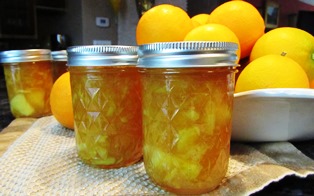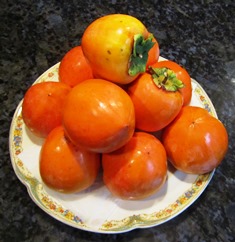Preserving Backyard Fruits and Vegetables
California urban farmers and backyard gardeners often find themselves with an abundance of leftover fruits and vegetables since California’s harvest season spans the whole year. What to do with all that produce?
Leftover produce can be donated to a food bank or preserved through various means, including boiling water canning, pressure cooker canning, freezing, or drying.
Canning supplies (and often, dehydrators) for preserving the bounty of fruits and vegetables are available year-round at local DIY stores, Walmart, K-Mart, Sears, kitchen and cooking supply outlets, hardware stores, and natural food markets as well as specialized container stores.

Strawberry jam, pictured here in a typical canning jar, tastes great on peanut butter sandwiches and toast
Boiling water canning (in which sealed jars are submerged in boiling water for a specific period of time) preserves high acid foods, including fruits, jams, jellies, tomatoes with added acid, pickles, applesauce, relishes, condiments, chutneys, sauces, fruit butters, sauerkraut, and vinegars.

Apricots are easily turned into great-tasting jams and jellies in a boiling water bath canner or dried into leathers
The 212 degrees Fahrenheit of heat in boiling water coupled with the high acid content of the food prevents the growth of Clostridium botulinum, the organism that can cause botulism.
For preserving fresh garden vegetables, meat, seafood, and poultry (low acid foods), you’ll need to process these in a steam-pressure canner at a temperature of 240 degrees Fahrenheit for the established time (times are listed in many canning books and university websites for food preservation) to safeguard against Clostridium botulinum and other microbes. See, http://www.ag.ndsu.edu/pubs/yf/foods/fn173.pdf.
The U.S. Department of Agriculture (USDA) has produced a nifty home food preservation guide that is free and downloadable from http://nchfp.uga.edu/publications/publications_usda.html.
The National Center for Home Food Preservation (NCHFP) is a veritable treasure trove of information about how to safely preserve fruits, vegetables, seafood, and meat. The site also offers a self-study course and publications as well as many other resources. See http://nchfp.uga.edu/.
If you like dried fruit and fruit leathers, check out the NCHFP’s section on homemade fruit rolls (also known as leathers). See, http://nchfp.uga.edu/how/dry/fruit_leathers.html.
When you take the time to preserve the organic fruits and vegetables you grow and harvest, you can be sure of the quality and nutrient value of the food you and your family consume.
 Facebook
Facebook Goodreads
Goodreads LinkedIn
LinkedIn Meera Lester
Meera Lester Twitter
Twitter






